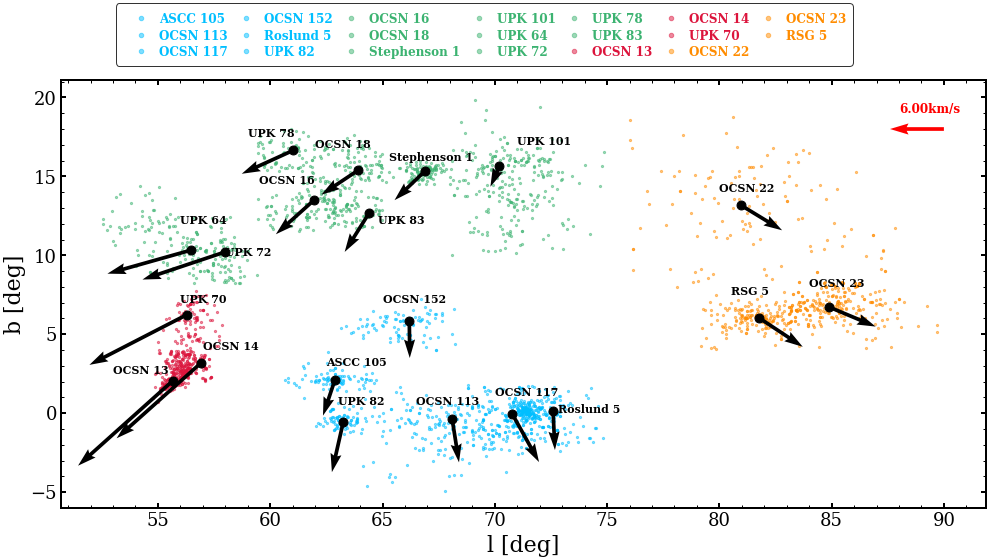

Unveiling the Birth of Star Cluster Groups in the Milky Way
While star formation is generally understood to occur in a clustered mode, giving rise to open clusters (OCs), it remains an open question whether OCs predominantly form in isolation or also as part of larger, structured groupings.
Recently, researchers from the Xinjiang Astronomical Observatory (XAO) of the Chinese Academy of Sciences in collaboration with the Shanghai Astronomical Observatory (SHAO), Yunnan Observatories, the University of Heidelberg, have discovered four previously unrecognized primordial OC groups in the Milky Way.
The member OCs within each OC group originate from the same molecular cloud (GMC) and formed through a process of sequential star formation. Among these, two groups (G1 and G2) are likely formed via a hierarchical mechanism triggered by multiple supernova (SN) explosions.
The findings were published in Astronomy & Astrophysics (A&A, 696, A117, 2025).
Open clusters are loosely bound assemblies of stars born from the same GMC. While most OCs exist as independent stellar systems, some are found in binary or higher-order systems, known as OC groups. These groups are spatially close and share a common origin from the same GMC, known as OC groups.
The research team used high-precision data from the Gaia satellite to identify the OC groups by analyzing correlations in three-dimensional (3D) positions, velocities, and ages. Remarkably, G1 and G2 display distinct ring-like and arc-like morphologies, suggesting external compression events.
Based on these findings, the researchers adopted a triggered star formation framework to construct spatial correlation maps between cluster age and distance from potential SN explosion sites around the birthplace of OC groups. A clear age-distance correlation emerged, supporting a scenario in which multiple SN explosions, occurring over a short timespan, sequentially triggered the formation of G1 and G2.
To further validate this hypothesis, researchers performed trajectory traceback analyses of 607 pulsars, which are remnants of SN explosions. Several candidates were found to have birthplaces matching the predicted explosion region. This spatial agreement, together with the observed cluster age gradients and SN remnant locations, supports a feedback-driven and hierarchical formation of OC groups.
This study highlights the pivotal role of feedback processes such as SN explosions in regulating large-scale star formation and the dynamical evolution of star clusters in galactic environments. Moreover, it also provides new insights into tracing feedback imprints in the Galactic structure and establishes a framework for connecting star formation, stellar evolution, and feedback processes across different scales.
The research was supported by the National Natural Science Foundation of China (NSFC), the Chinese Academy of Sciences, and regional funding from Xinjiang.

Fig 1. Four newly reported primordial open cluster groups (G1–G4) from Liu & Zhang (2025). The blue, green, red, and orange dots represent OC groups G1, G2, G3, and G4, respectively. The black arrows denote the tangential velocity of the member OC, with arrow lengths scaled proportionally according to the red reference arrow located in the upper right corner.

Fig 2. Schematic illustration of a supernova-triggered star formation scenario proposed in Liu & Zhang (2025). A sequential star formation event was subsequently triggered along the shell, where red stars represent an older stellar population and blue stars indicate younger generations formed later.
Attachment Download: